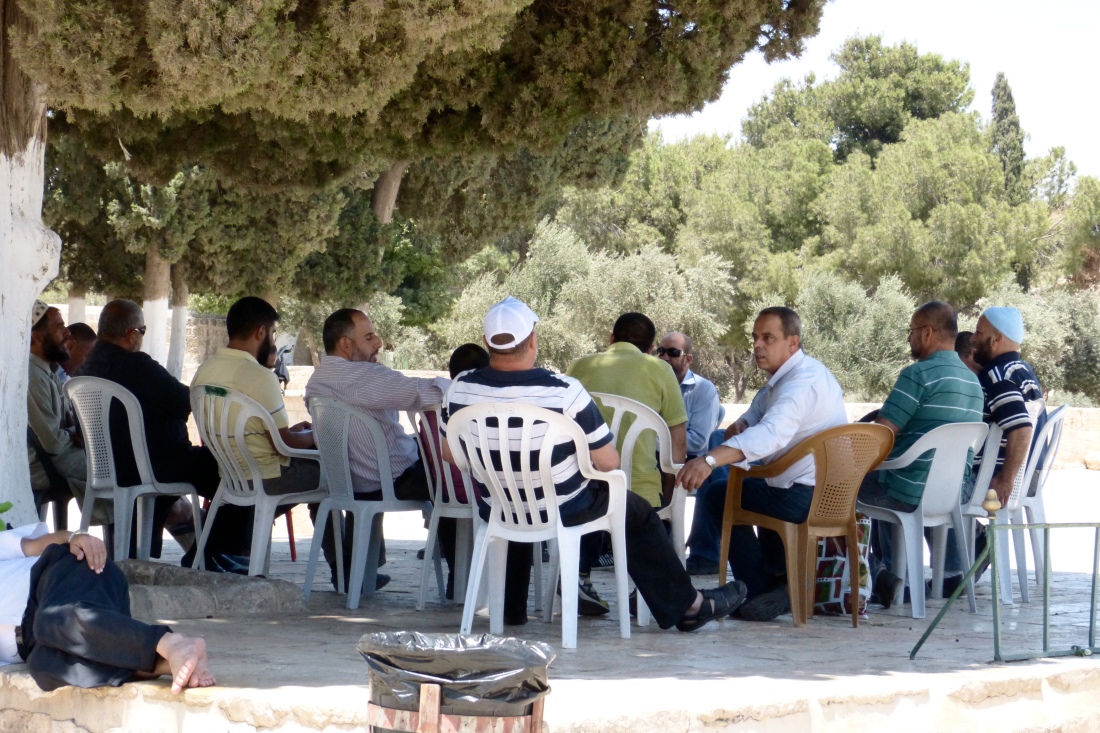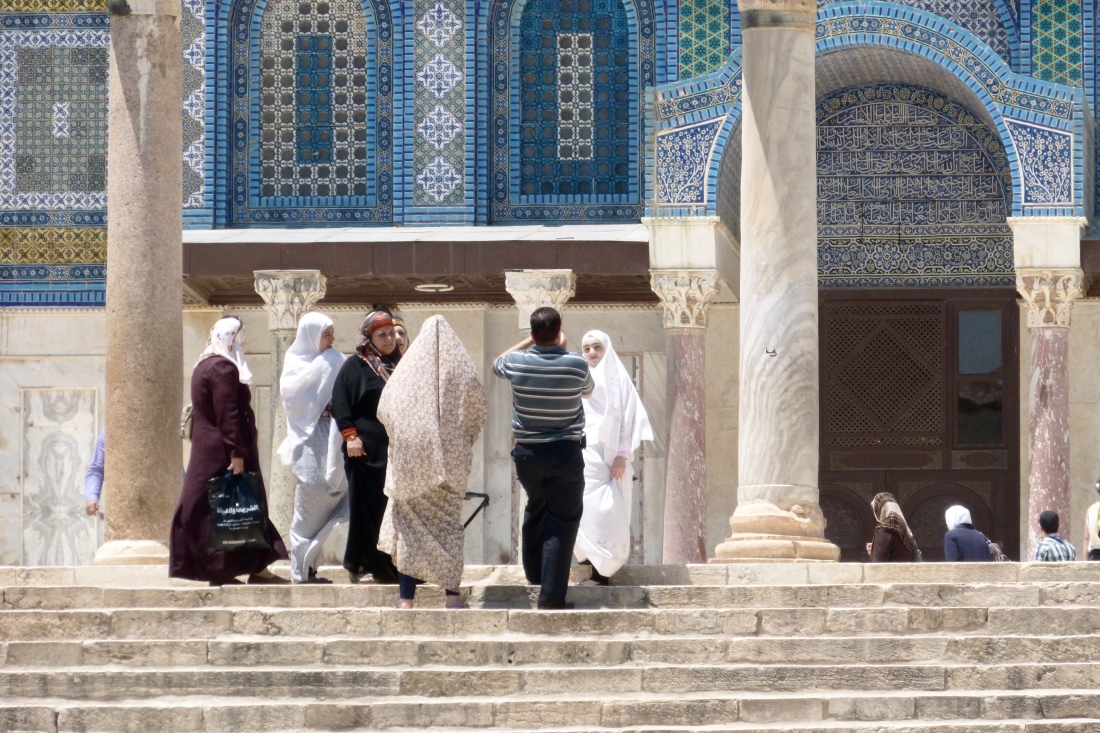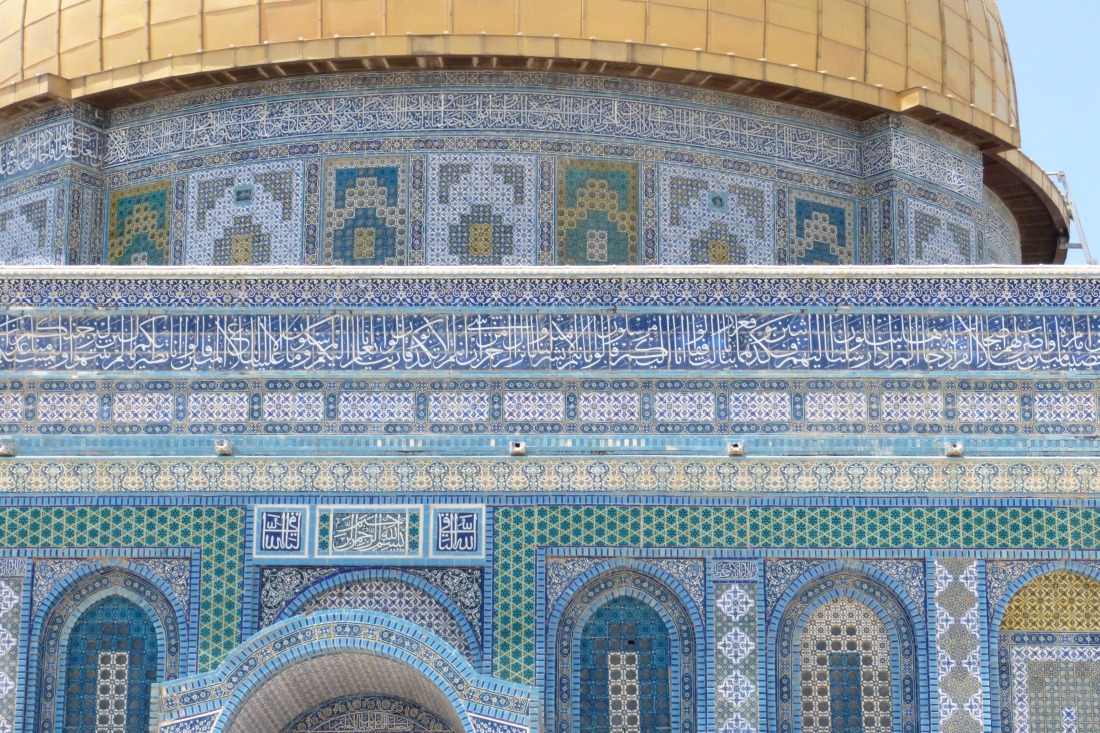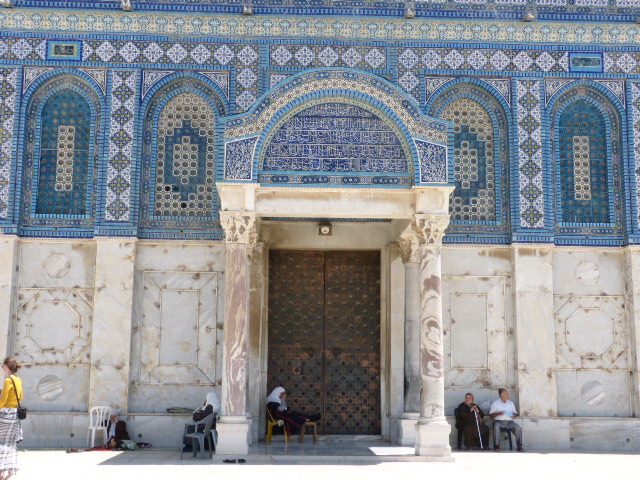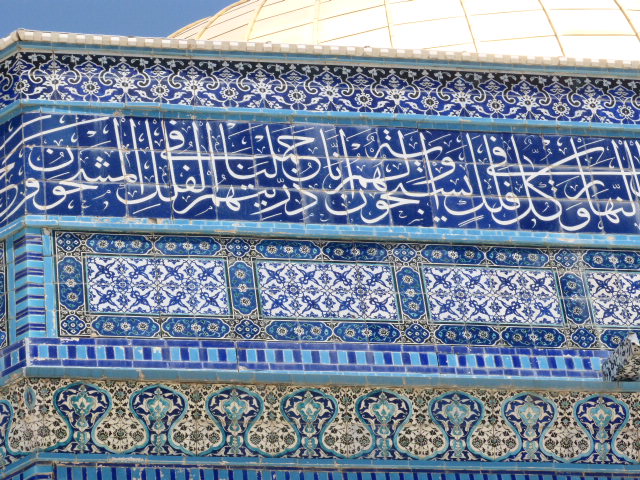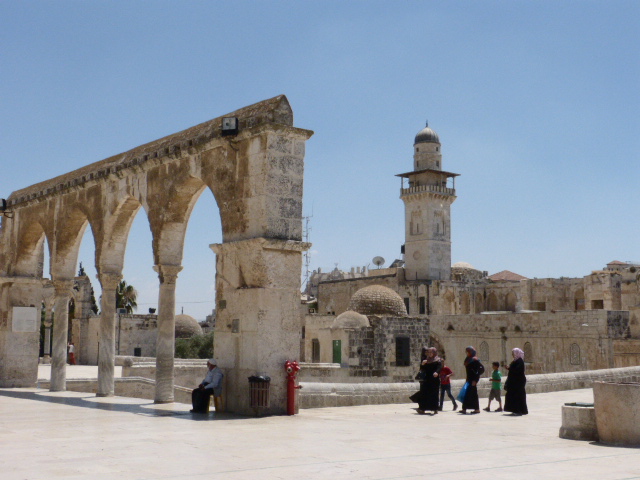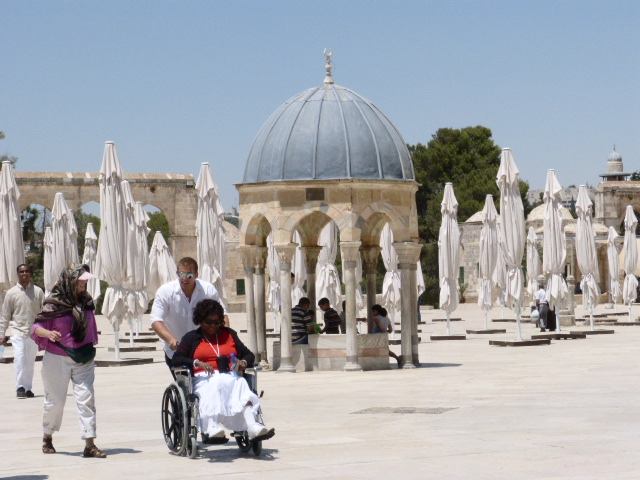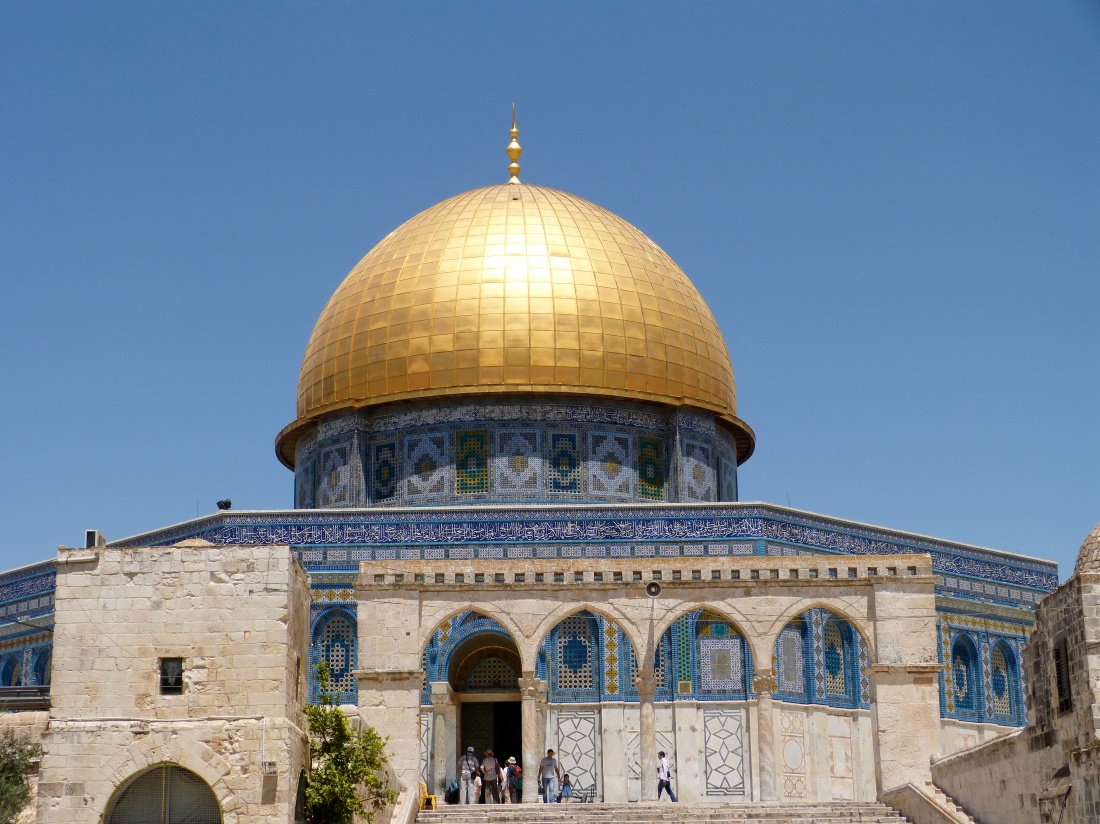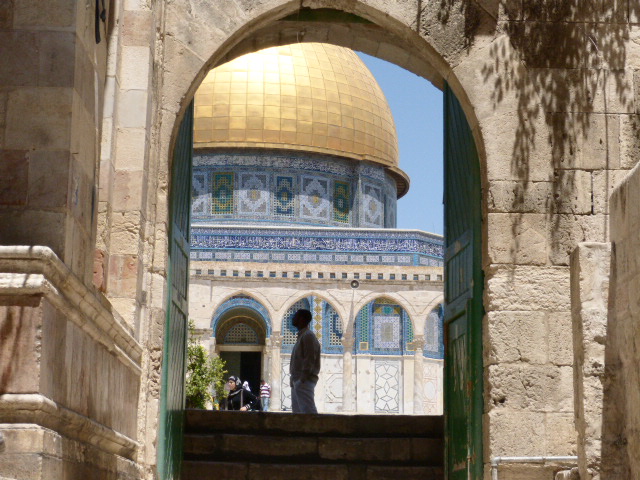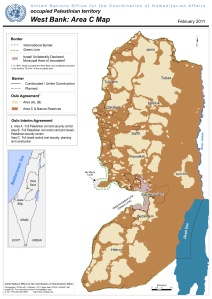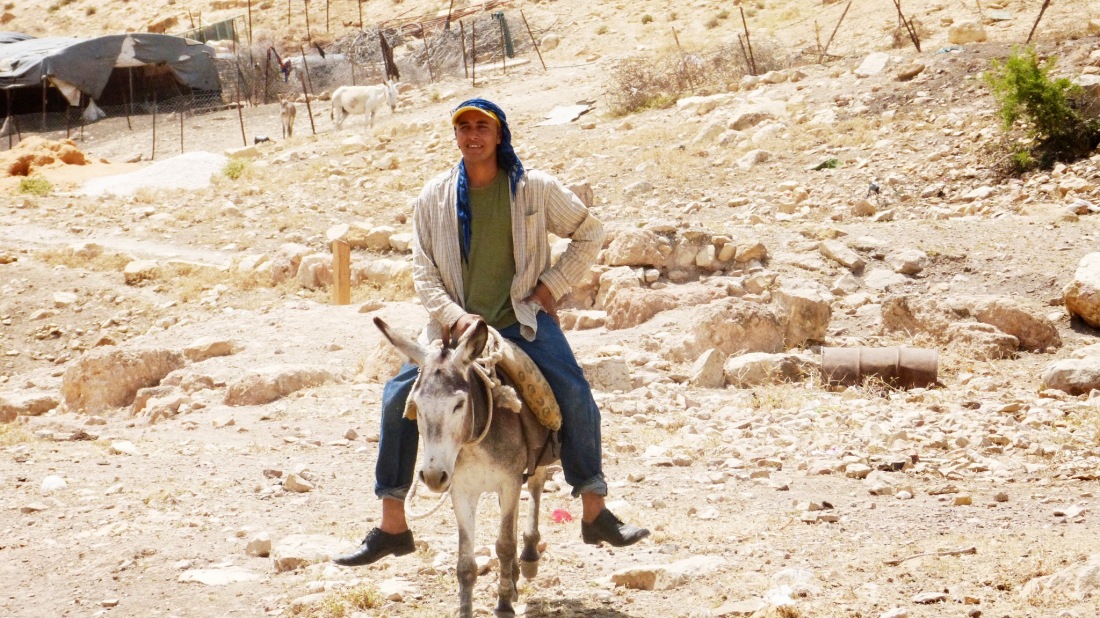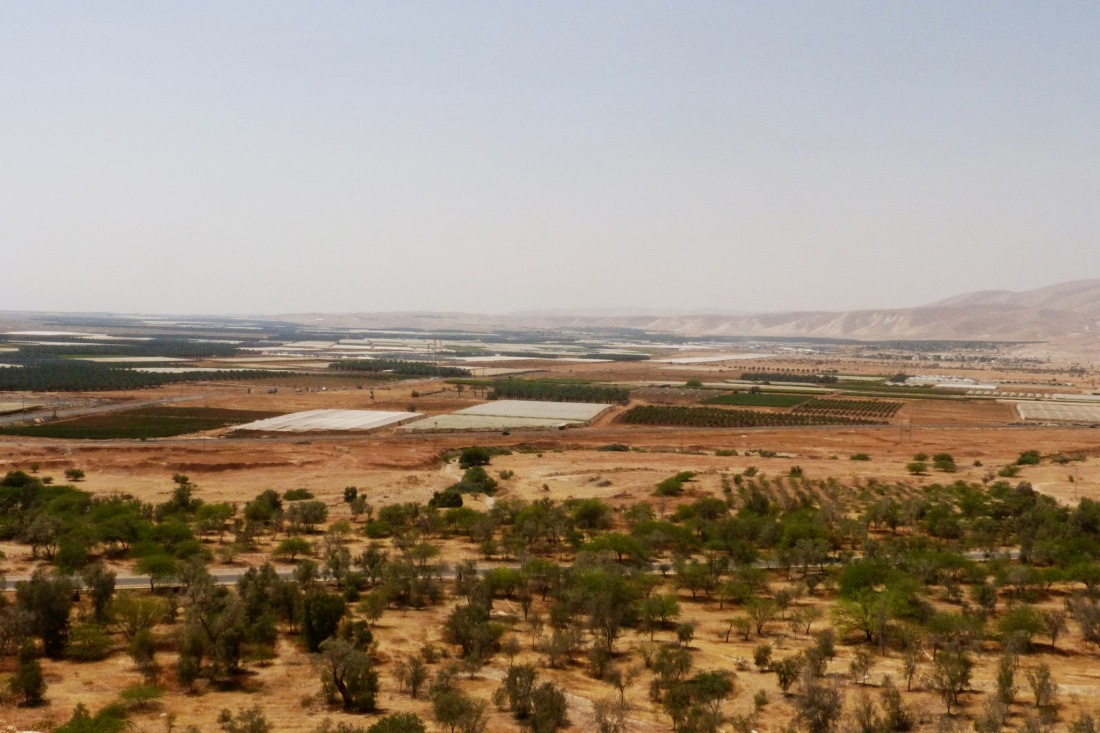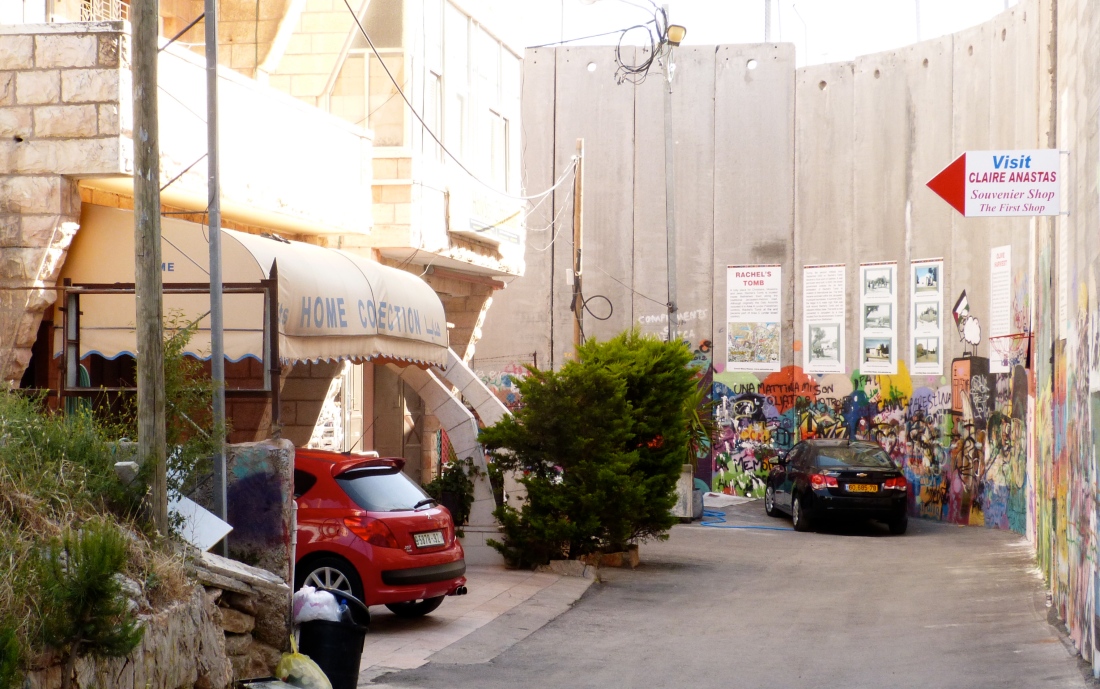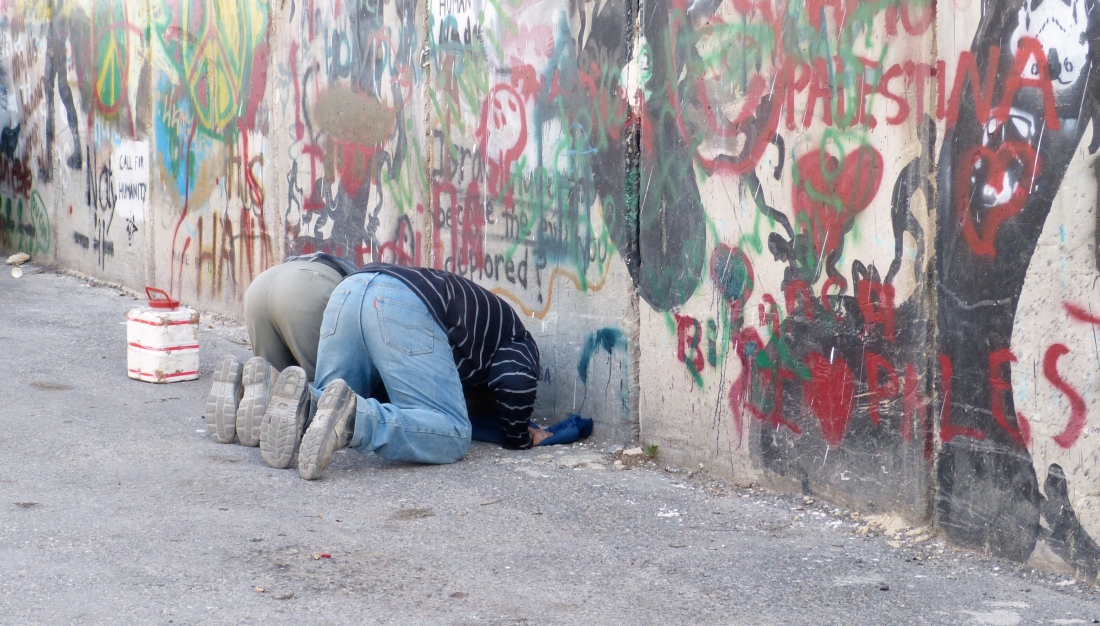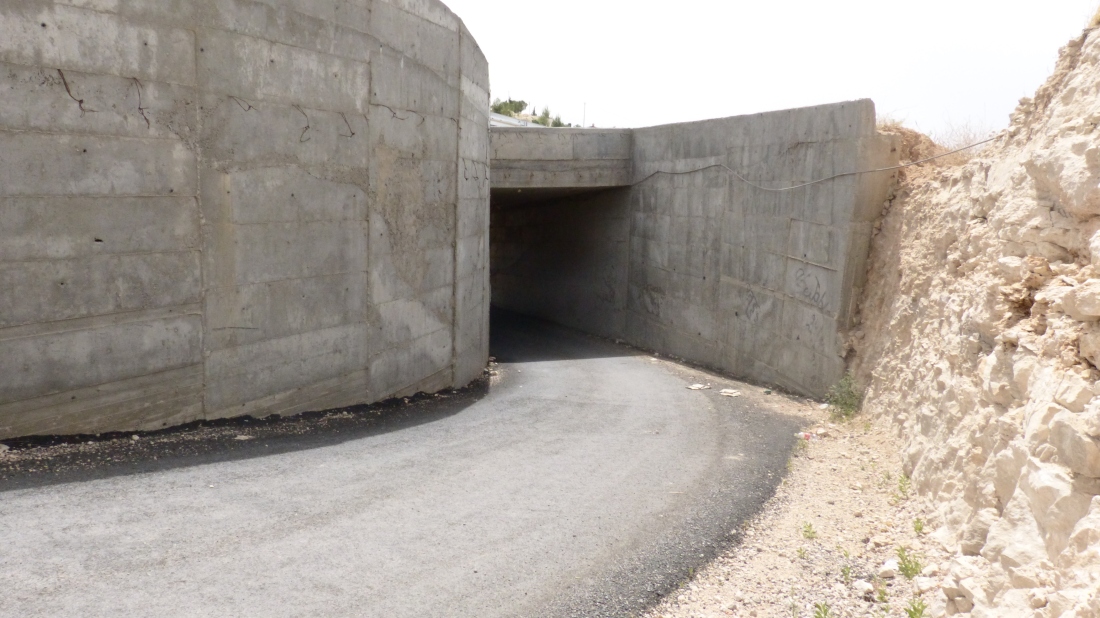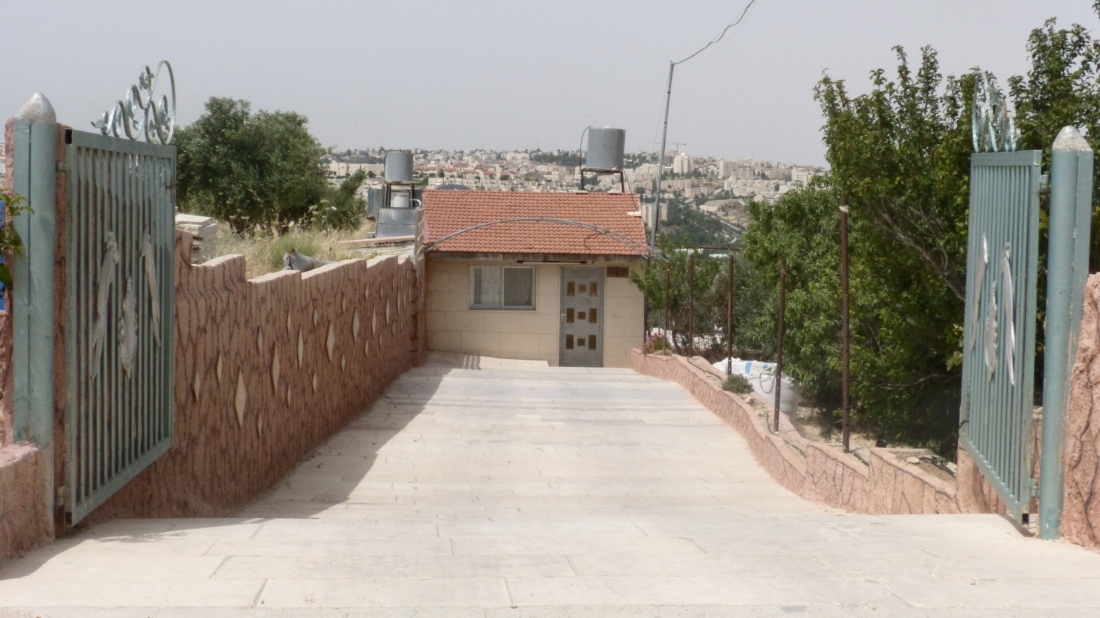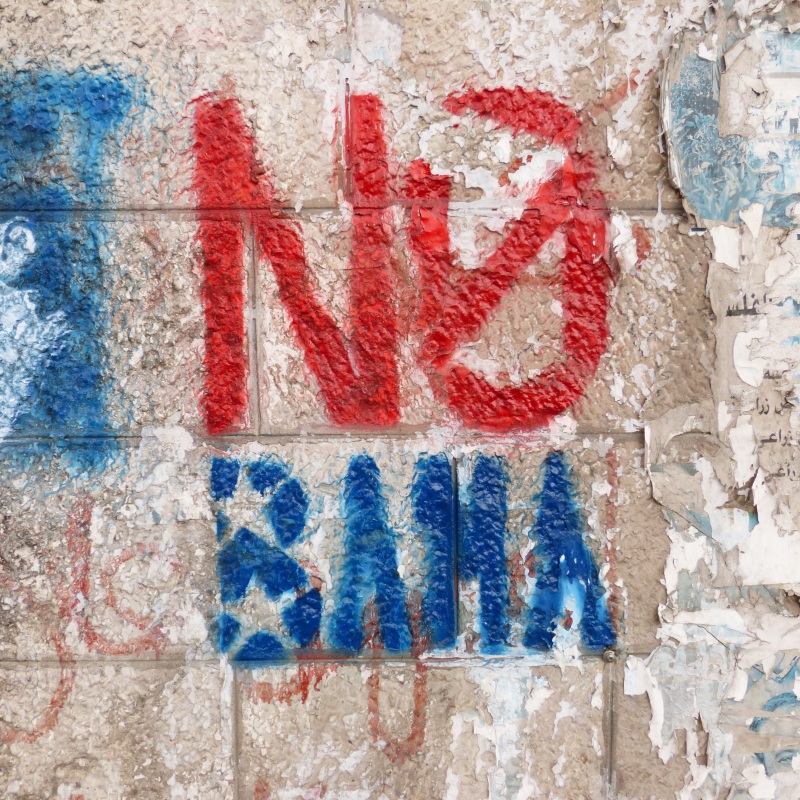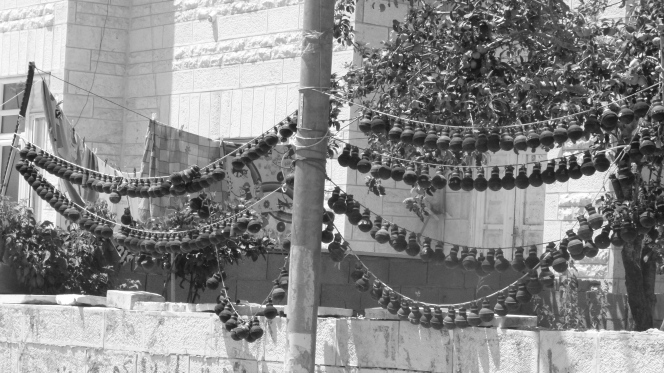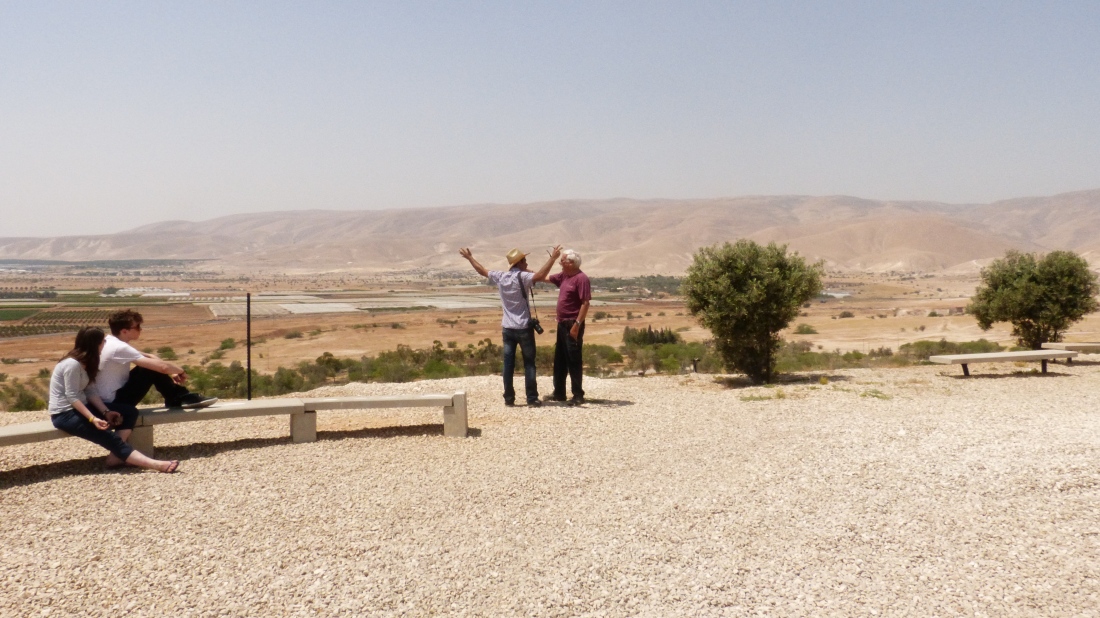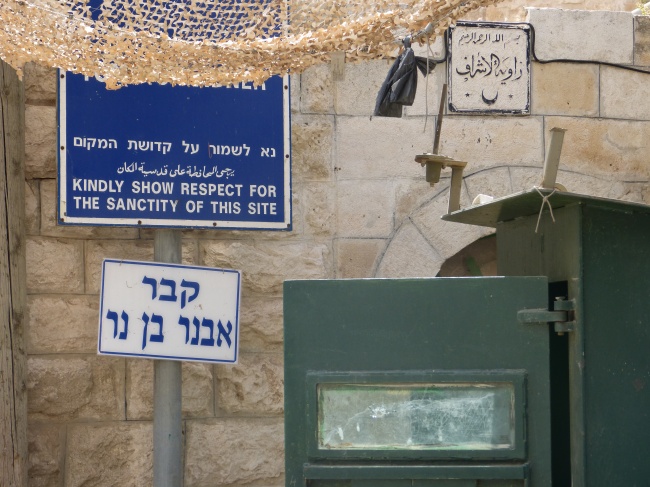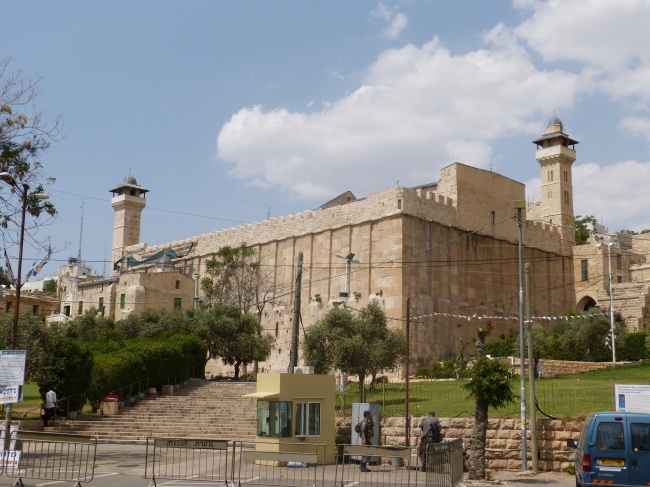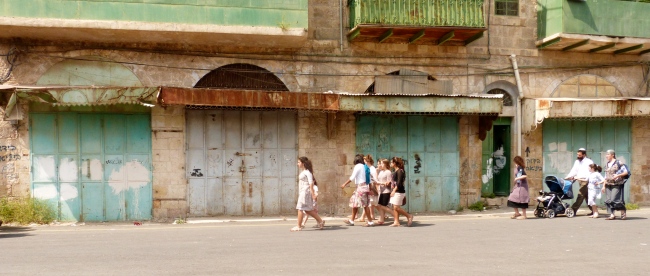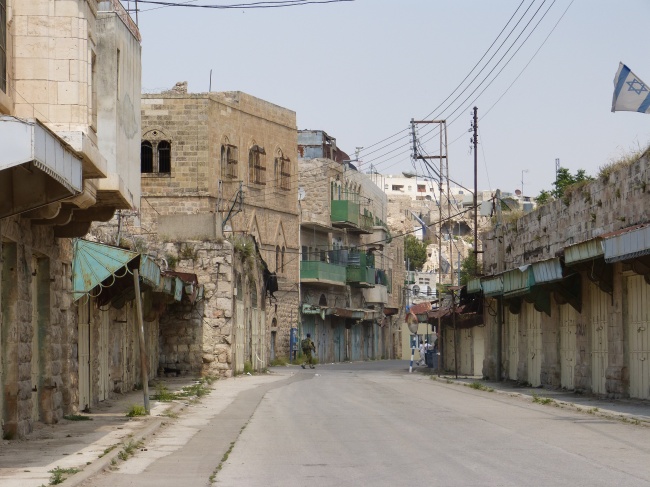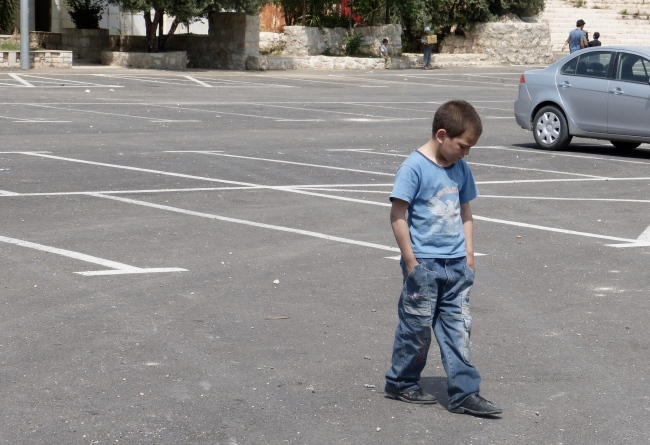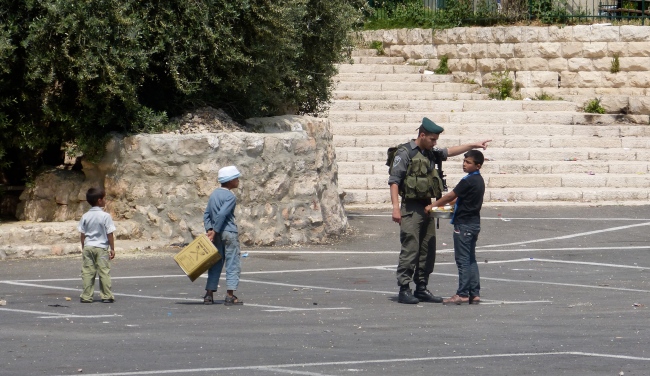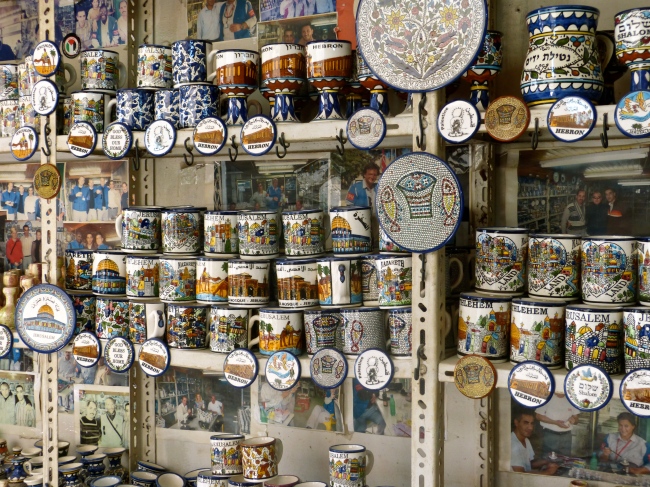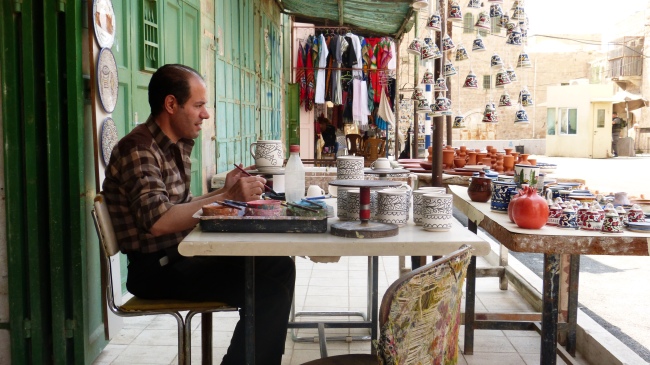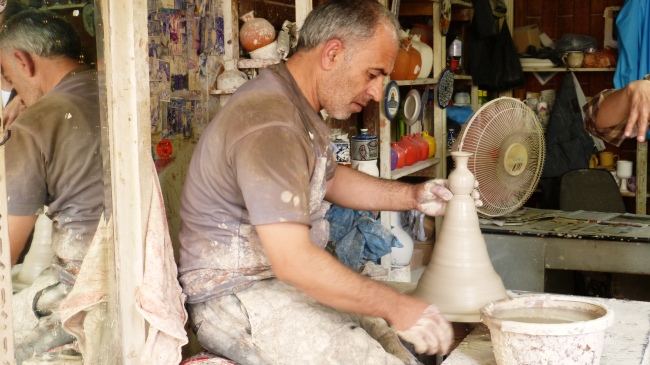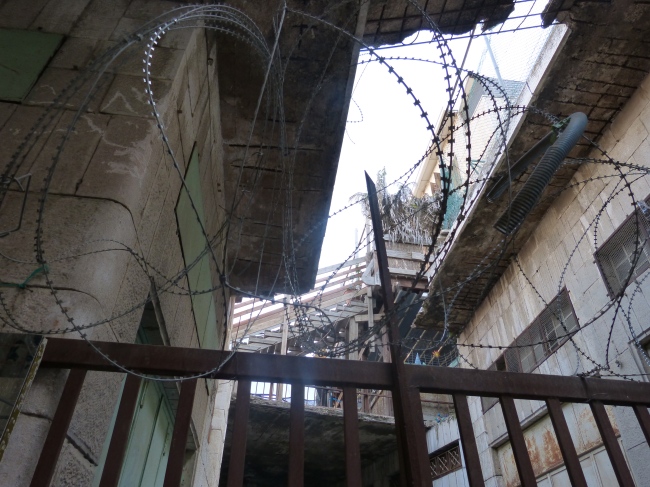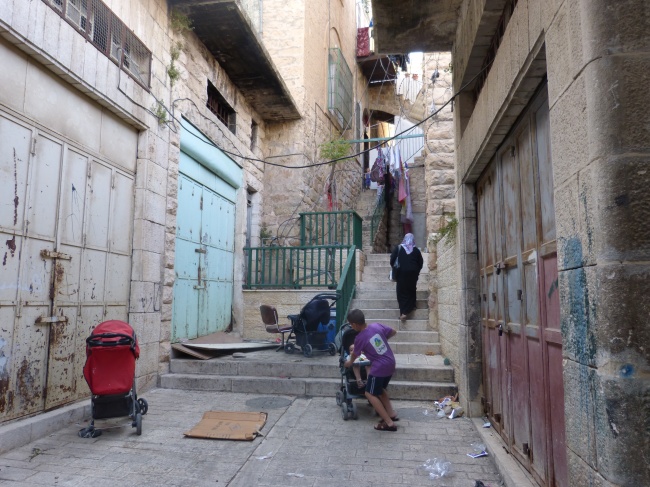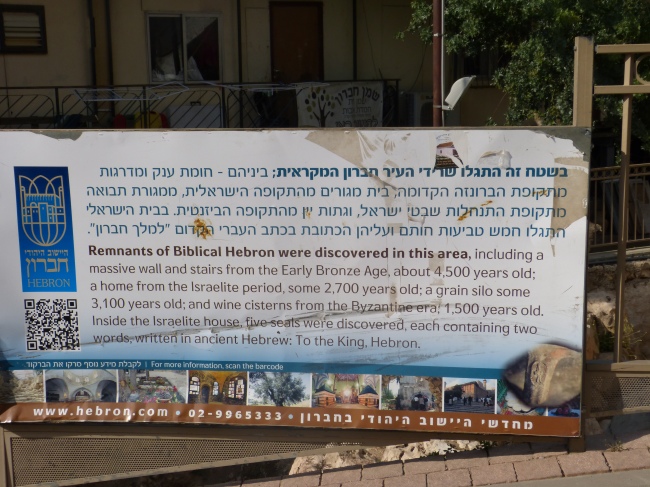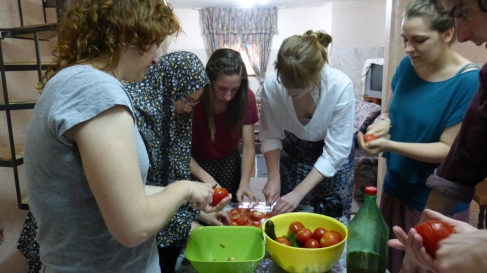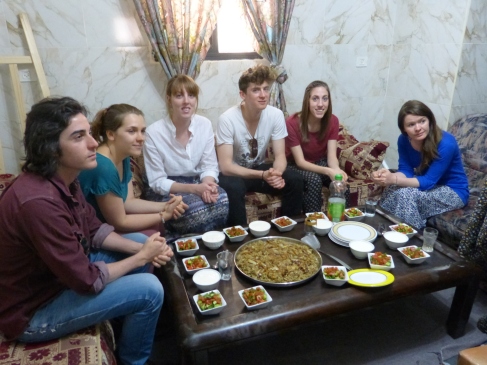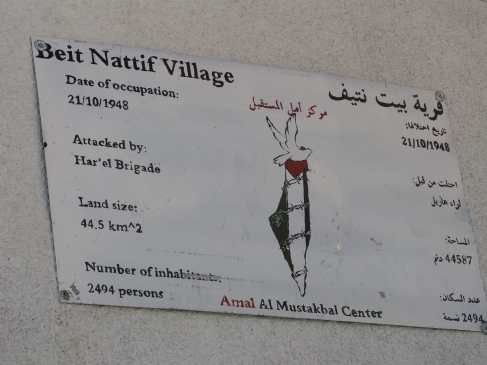
A few weeks ago I expressed a desire to visit the village of Silwan near the Old City of Jerusalem (Al Quds) to my team leader Ruhan, as the students working on the R2E campaign had told us about the difficulties children living in Silwan experience in accessing education. Ruhan agreed to arrange a tour of east Jerusalem, which would take us to Silwan, with grassroots Jerusalem. After being cancelled once and rescheduled twice we finally went on this long awaited tour on Friday (18th May), and, although we didn’t get the lunch we had expected, or actually visit Silwan, the insight the tour gave us into the systematic Judaisation of this ancient city by the Israelis made it well worth the wait.
Due to the combined factors of having to drag hungover members of our party out of bed on Friday morning, following a late night at Snowbar – our favourite Thursday night destination, and delays crossing the Qalandia check point between Ramallah and Jerusalem, we arrived at the office of Grassroots Jerusalem later than scheduled. Our Israeli tour guide Micha therefore had to give us a rushed 20th century history of Jerusalem, which we listened to whilst enjoying Arabic coffee and waiting for the tour bus to arrive. I have heard this history many times but am always fascinated by the many different angles with which the same series of events can be told. Micha set the history of the rise of Zionism within the context of the rise of nationalism and self determination which occurred after the Second World War as the Ottoman and Austro-Hungarian Empires fell apart. It is out of this time that Zionism gathered popularity and became a powerful force which then during the 1930s mobilised european Jews to flee persecution by migrating to Palestine. Following the end of the Second World War and the defeat of Nazi Germany an influx of Jews from Europe to Palestine occurred on a massive scale. The next few years saw the Zionist forces within Palestine become more ruthless in their determination to safeguard the continuation of their race by achieving their own nation state, fighting the British, who held the UN mandate for Palestine, and the Palestinians. Once the British withdrew from Palestine the Jews, between 1947 and 1948, forcefully removed the Palestinian population (approx. 700,000 people) from the territory now recognised by International Law as Israel (Ilan Pappe on the Nakba: http://www.youtube.com/watch?v=qUDh-jTa3Go). This event known as the Nakba (disaster) was commemorated in Palestine on May 15th by protests and demonstrations in the cities of the West Bank. Israel has deliberately tried to hide the ethnic cleansing of Palestine, which led to the creation of their state by, for example, cutting state funding to any educational institution which teach the Nakba, thereby essentially making it illegal to teach it.
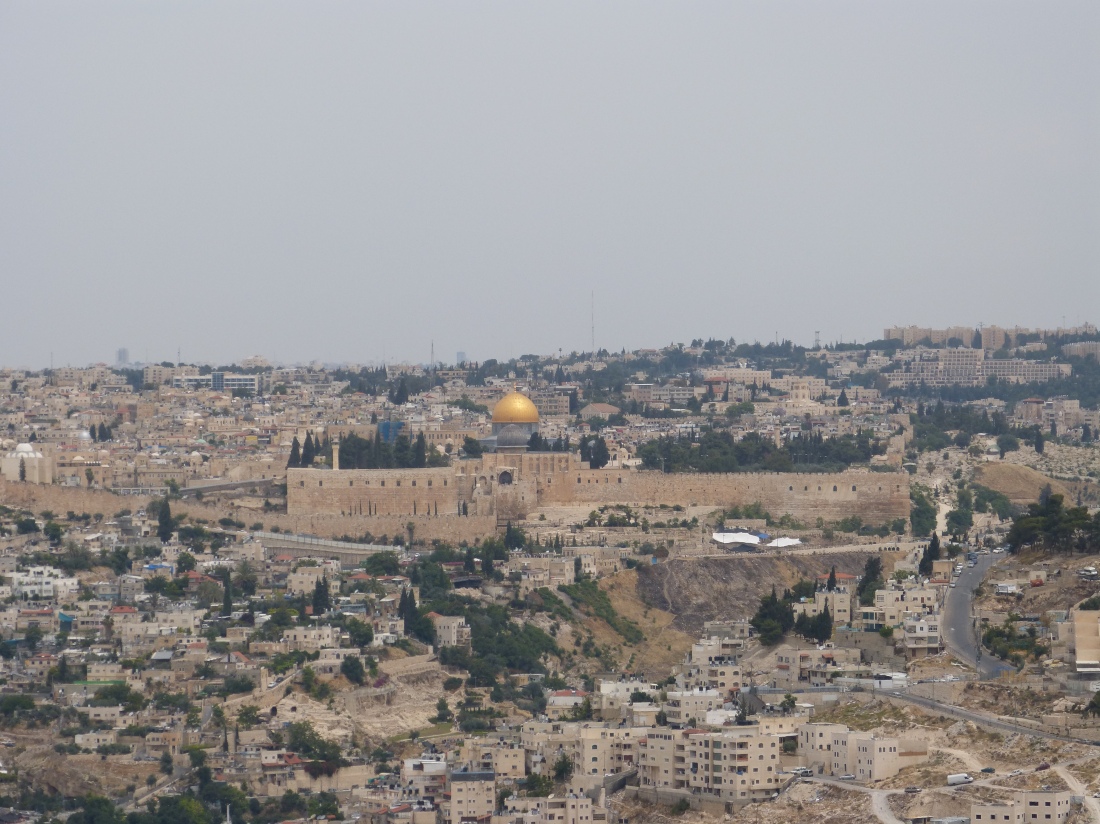
The city of Jerusalem has great historical significance for all the monotheistic religions and has been a melting pot of different creeds and cultures for thousands of years. Before 1948 however, the city whilst containing Christians, Jews and Muslims had a demographic majority of Arabs. Following the creation of the state of Israel the city was cut in two, the western half now belonged to the new Jewish state of Isreal and the eastern half to the Palestinians, under the rule of the Kingdom of Jordan. As we set out on our tour of east Jerusalem we drove along the road upon which this border used to sit. Today the border, despite still being recognised under International Law as the separation between the state of Israel and the Occupied Palestinian Territory of the West Bank, is not signposted. The line between east and west has been deliberately blurred so that Jerusalemites cross the border without noticing. Following the 6 day war in 1967, in which Israel invaded the West Bank, Gaza, the Golan Heights (Syria) and the Sinai desert (Egypt), the eastern half of the city of Jerusalem was illegally annexed into Israel.
Since 1967, Israel has been pursuing a series of deliberate policies to achieve a demographic majority of Jews within Jerusalem and today the city, within its official municipal borders, has a 65% majority of Jews. This is set to increase as the Israelis continue to force out Palestinians still living in the east of the city. This has been achieved through the redrawing of the municipal boundaries to take up the largest geographical space whilst leaving out the greatest possible number of Palestinians. Micha explained that when the municipal boundaries were redrawn they deliberately excluded nearby Palestinian villages whilst including their surrounding farmland. Construction in the east of the city has also been deliberately stifled. Green zoning laws were introduced in the central part of east Jerusalem limiting construction, where building permits were successfully gained, to below four stories. This led to a rise in construction in the suburbs of the city where permits could more easily be acquired and a population increase in these areas. When the separation barrier was built at the beginning of the 21st century however, the suburbs of east Jerusalem were cut off from the centre of the city, with dire economic consequences.

Our tour took us around the eastern section of Jerusalem which lies within the wall. The situation for Palestinians living in this area is extremely difficult. They are effectively living within the state of Israel but do not have citizenship rights. The only rights they have are based on their residency, which in order to maintain they must prove that their ‘centre of life’ is in the city and they must not leave the city for more than three years. The ‘centre of life’ policy means that if they are found to have a job outside of Jerusalem or their children go to school outside of Jerusalem they will lose their right of residency. Palestinians pay tax to the city authorities of the same amount as Jewish residents but they do not receive equal services in return. As we travelled around east Jerusalem we observed that as we passed Jewish settlements the roads were properly tarmacked roads with pavements, there were bus stops and the streets were clean and orderly. Once we passed out of the settlement to where the Palestinians live these things disappeared and instead we saw uncollected rubbish littering the side of the road. Palestinian neighbourhoods to not receive basic infrastructure, such as water or roads, or adequate public services such as health care or education. There is a dire shortage of schools in the area and the schools that are there have a 50% drop out rate. Micha told us that even for the few children from the area who do make it through high school education they face great difficulties in continuing their educational development. They have three options: they could attend the Hebrew University, but all courses are taught in Hebrew. Or they could attend the Al Quds University which is located beyond the separation wall however, any qualifications they gain there will not be recognised by the authorities in Israel and they will therefore continue to receive minimum wage, even if they have qualified as a doctor. Or they have the option of going abroad, but if their course means that they are away for more than three years they would lose their right of residency.

As I have described it so far, the situation for Palestinians in Jerusalem seems bleak however the deliberate policy of Israel to Judaise the city goes much further. The Israeli authorities carry out house demolitions to cleanse the area of Palestinian families. They arrive one day with a notice claiming that the building does not have the correct permits for construction and charge the occupants 1000 shekels (approx. £200) per month until the house is demolished. If the family fail to demolish their own home, as many now do in response to such notices, the Israeli bulldozer turns up one morning and within an hour reduces the family home to rubble. The, newly homeless, tenants then receive a 90,000 shekel (approx. £18,000) charge for the work. In addition to this more and more Jewish settlements have emerged in east Jerusalem. Micha described to us how the establishment of Jewish settlements in the West Bank has changed from the setting up of communities on hill tops to the invasion of Palestinian communities from the centre, such as in Hebron. After the tour we visited the neighbourhood of Sheik Jarrah and spoke to Mr Nasser who was evicted from his family home in August 2009. Following their eviction a family of settlers moved into his home. Unfortunately this is not an uncommon experience in Sheikh Jarrah. Micha told us that out of 32 houses in Sheikh Jarrah 14 currently have eviction or demolition orders. The neighbourhood is made up of refugees dating back from the creation of the state of Israel. It is shocking to me that having fled their lands in 1948, today they are still being hassled to leave the land where they sought refuge 65 years ago.

In the afternoon we joined the community on one of their weekly peaceful demonstrations. This was a particularly large demonstration in anticipation of an important court ruling which was to be given the following Monday on an appeal by a Palestinian family facing eviction. It was inspiring to march alongside Israelis and Palestinians to demand justice for the residents of Sheikh Jarrah and an end to settlement expansion in Jerusalem. The demonstration was unusually peaceful as the neighbourhood had won a previous court ruling to prevent the IDF entering the area. It was strange to be on a pro Palestinians protest without fearing violence from the Israeli forces and it felt as though we were somewhere where the right to protest is respected, and not in Israel where just a few days before, on Nakba day, Palestinian protests were quashed with tear gas and rubber bullets (or rubber coated steal bullets in some cases).

Our tour guide Micha gave us a powerful insight into the workings of the system of oppression operated by the Israelis in east Jerusalem. It was especially interesting to hear his personal views as an Israeli born and raised in Jerusalem who had served in the army from the age of 18 to 21. He described how he came to understand the reality of Israel’s occupation of Palestine whilst serving in the city of Hebron. He was posted there to protect the settlers from the Palestinians, but quickly realised that it was the Palestinians that needed protecting from the violent settlers (watch Micha discussing this on Breaking the Silence: http://www.youtube.com/watch?feature=player_embedded&v=DdRBO1jpDws). Through this he came to see the reality of the Israeli settlement project in the West Bank; through providing protection for the settlers they facilitate the expansion of the settlements. After leaving the army he worked alongside his friends, travelling around Israel and collecting testimonies from soldiers about their experiences during their national service. Out of this came Breaking the Silence, an organisation of veteran soldiers which seeks to expose the reality of the role of the Israeli army in the OPT to the Israeli population in order to provoke debate. Micha stopped working with Breaking the Silence a few years ago and became involved in Grassroots Jerusalem where he now works closely with Palestinian communities in east Jerusalem to empower them to find resolutions to the challenges they face. He is deeply sceptical of the role of international NGOs in Palestine as they do not act in the needs of local communities and have served to create a culture of dependency and to normalise the occupation. He has committed himself therefore, to working from the grass-roots, by encouraging local communities to became politically engaged. In teaching us about the situation he hopes that we can increase the international public’s understanding of the situation and encourage support for the BDS movement. He did not hold back in stating the obvious reality of what Israel is today: an apartheid state. The creation of this has been a deliberate policy by the state and until the international community calls Israel out on its crimes nothing will change. Micha also called on us to look beyond the Zionist forces in are efforts to understand the driving force behind the occupation – who else stands to gain? (Visit http://whoprofits.org/ to read more about the capitalist forces driving the continuation of the illegal Israeli occupation of Palestine)
Find out more about Sheikh Jarrah here: http://www.en.justjlm.org/ and more about the organisation Micka works for here: http://www.grassrootsalquds.net/

